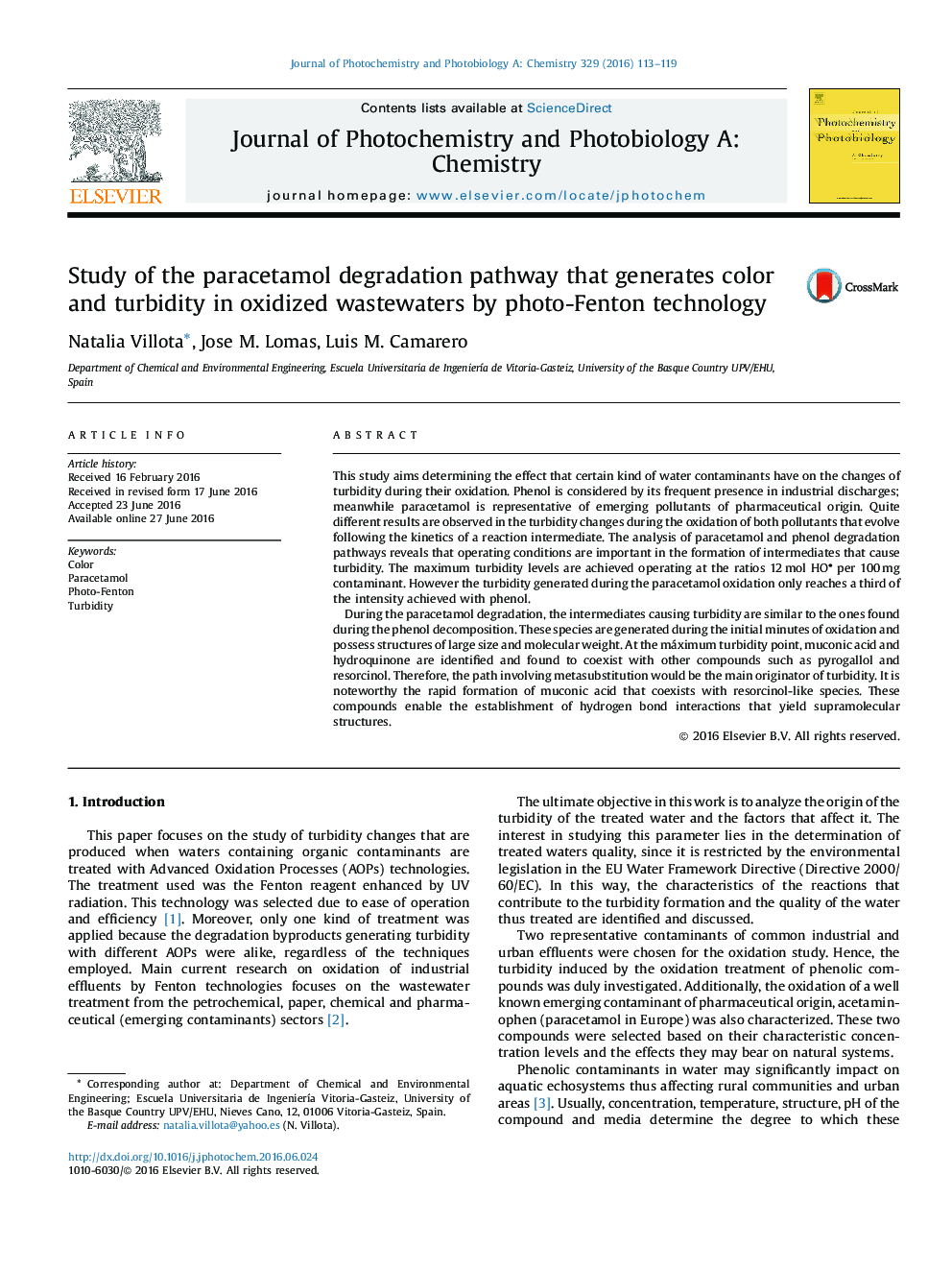| کد مقاله | کد نشریه | سال انتشار | مقاله انگلیسی | نسخه تمام متن |
|---|---|---|---|---|
| 25986 | 43926 | 2016 | 7 صفحه PDF | دانلود رایگان |
• Propose a more completed pathway for aqueous paracetamol degradation.
• Delve into the origin of the turbidity and color produced during the oxidation of phenol and paracetamol by the photo-Fenton treatment.
• Comparare the selectivity of the oxidation mechanism leading to the formation of intermediates that cause turbidity and color when degrading contaminants with bencenic ring structures.
• Determine that the stoichiometric ratio favoring the turbidity formation corresponds to 12 mmol HO 100 mg contaminant.
• Establish that the main intermediates causing turbidity are the meta-substituted bencene rings and some dihydroxylated benzoquinones, since the resulting species would establish interactions by hydrogen bonds leading to supramolecular structures.
This study aims determining the effect that certain kind of water contaminants have on the changes of turbidity during their oxidation. Phenol is considered by its frequent presence in industrial discharges; meanwhile paracetamol is representative of emerging pollutants of pharmaceutical origin. Quite different results are observed in the turbidity changes during the oxidation of both pollutants that evolve following the kinetics of a reaction intermediate. The analysis of paracetamol and phenol degradation pathways reveals that operating conditions are important in the formation of intermediates that cause turbidity. The maximum turbidity levels are achieved operating at the ratios 12 mol HO per 100 mg contaminant. However the turbidity generated during the paracetamol oxidation only reaches a third of the intensity achieved with phenol.During the paracetamol degradation, the intermediates causing turbidity are similar to the ones found during the phenol decomposition. These species are generated during the initial minutes of oxidation and possess structures of large size and molecular weight. At the máximum turbidity point, muconic acid and hydroquinone are identified and found to coexist with other compounds such as pyrogallol and resorcinol. Therefore, the path involving metasubstitution would be the main originator of turbidity. It is noteworthy the rapid formation of muconic acid that coexists with resorcinol-like species. These compounds enable the establishment of hydrogen bond interactions that yield supramolecular structures.
Journal: Journal of Photochemistry and Photobiology A: Chemistry - Volume 329, 1 October 2016, Pages 113–119
